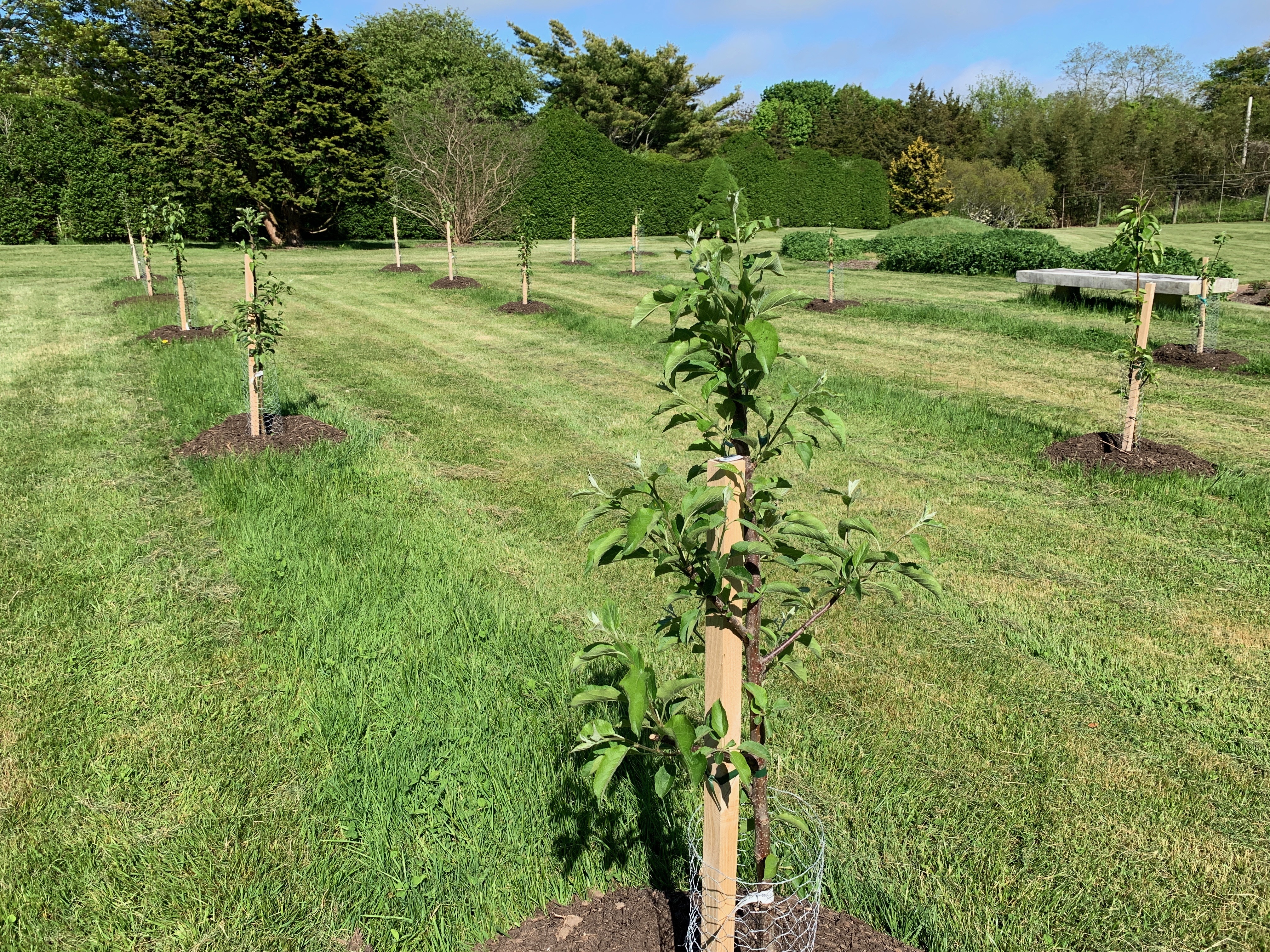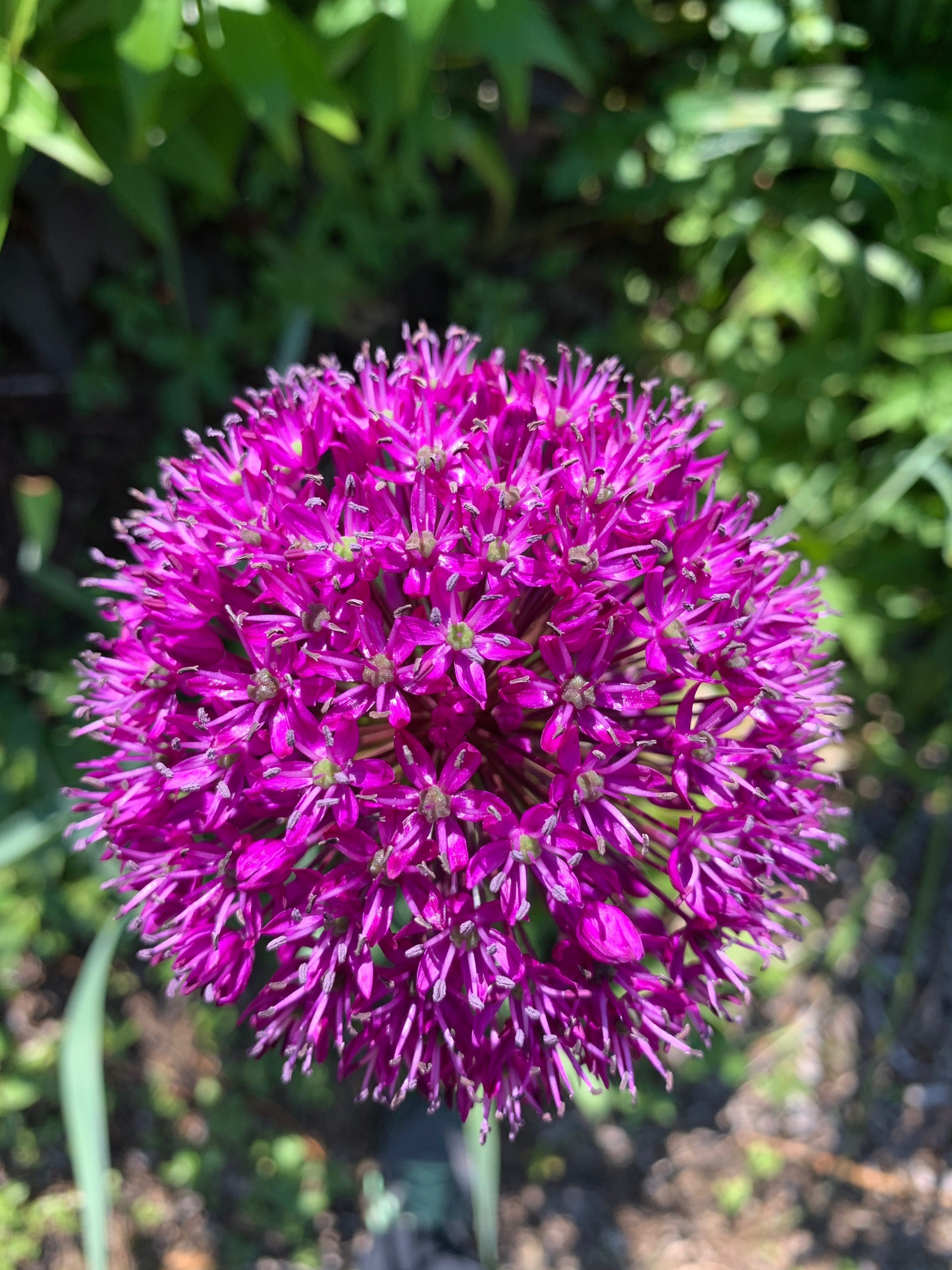Blog
A Note From Rick | Late Spring at Bridge Gardens
By Rick Bogusch
It’s the time of year when everything needs to be done at the same time. Gardens need on-going maintenance on a weekly, if not daily, basis. Seeds and plants need planting. Home-grown seedlings need up-potting to keep them vigorous. Perennials need dividing. If it doesn’t rain, it’s water, water, water. And after watering there’s spraying or dusting for pests like rabbits and cabbage loopers. Not to mention weeding, weeding and more weeding. So, that’s what we’ve been doing in the gardens, and I expect that’s what you are doing, too.
First crops have been harvested from the vegetable garden for the Sag Harbor food pantry, with much more to come in the future. Our community gardeners have also harvested early crops like spinach and arugula and are looking forward to tomatoes, peppers and eggplant. In our rose garden, the roses are doubling in size and setting buds for their peak display in June, thanks to their monthly fertilizing by volunteers Heidi and Tom.








Apples and pears in our new orchard have all leafed out and inch taller each week. The borders near the Garden House have assumed the purple tones of early June as flowering onions come into bloom. Lilies grow taller each day and hold the promise of blooms and sweet perfume in July and August. The first round of annuals have been planted in the herb garden and soon poppies, foxgloves and feverfew will beckon visitors from afar.
As in years past, we’re adding more and more native plants to our collection. Look for ferns, goldenrods, asters and grasses, as well as witch hazels, bush honeysuckle, ninebark and hollies in the coming months.
I’ve enjoyed seeing so many visitors in the Gardens. People have been enjoying the plants and plantings, as well as the open space and overall landscape. Bridge Gardens changes monthly, so I always urge everyone to keep coming back to watch for new blooms and new additions. I urge you to do the same and look forward to your visits.
— Rick Bogusch, Garden Director
National Pollinator Week is June 22 - 28, 2020
Many people I’ve heard from in the last month or so have said they’re spending a lot more time outdoors in their gardens, taking advantage of time on their hands during these months of non-existent social gatherings.
If you’re thinking of a landscape project or garden renovation, now is the perfect time to shrink your lawn and expand your garden beds, with a focus on native flowering trees, shrubs and perennials to support pollinators. These include bees, wasps, birds, and other wildlife. In honor of National Pollinator Week, we spoke with Rusty Schmidt, President of the Long Island Native Plant Initiative who offered his top five tips for gardeners:
- Plant native, pollinator-friendly plants that will bloom from April through November to ensure enough food for pollinators throughout the season.
- Add native grasses to the garden. Grasses are structures that help support flowering plants and offer places for pollinators to rest, hide, and hang a cocoon. While a pollinator garden doesn’t have to be dominated by grasses, planting a few or up to half your garden with grasses is very beneficial.
- Flowering late season plants are very important for pollinators as they get ready for hibernation. Consider adding high nectar sources in the garden like aster and goldenrod to give these insects the critical support they need.
- DO NOT SPRAY any herbicide in the pollinator garden. You may be trying to get rid of insects you dislike, but you are also killing or damaging the insects you are hoping to attract.
- Plant in groups — you will get more enjoyment out of the flowers as they are more showy in big groupings. A mass of flowering plants also helps the pollinators to congregate around their nectar source.
For more information on the Long Island Native Plant Initiative, along with fact sheets about various native plants for pollinators, visit their website.
![block.image[0].title](/assets/images/26.Butterfly-and-bee-088F5_200618_220215.jpg)
photo by Amagansett Studios

